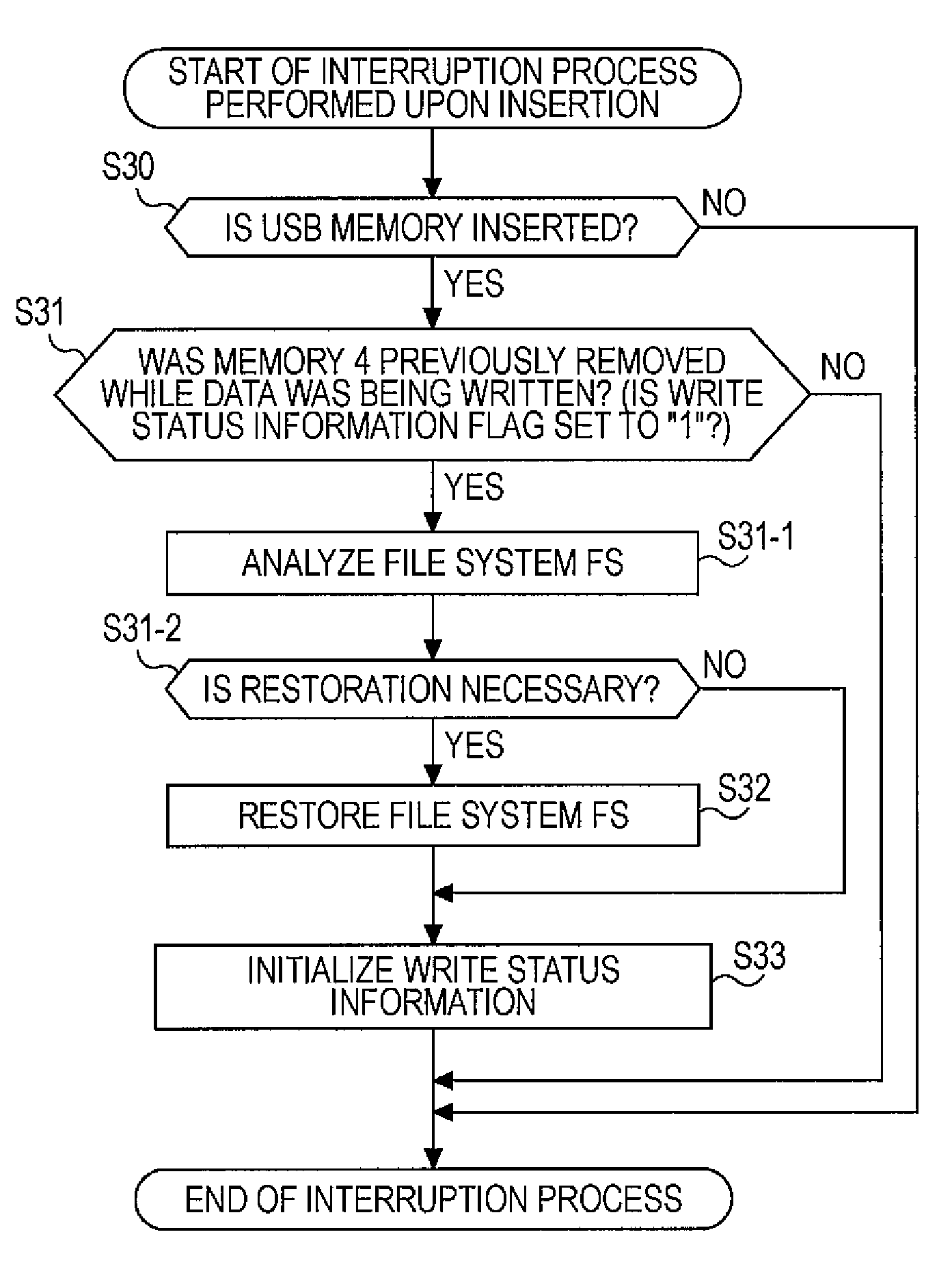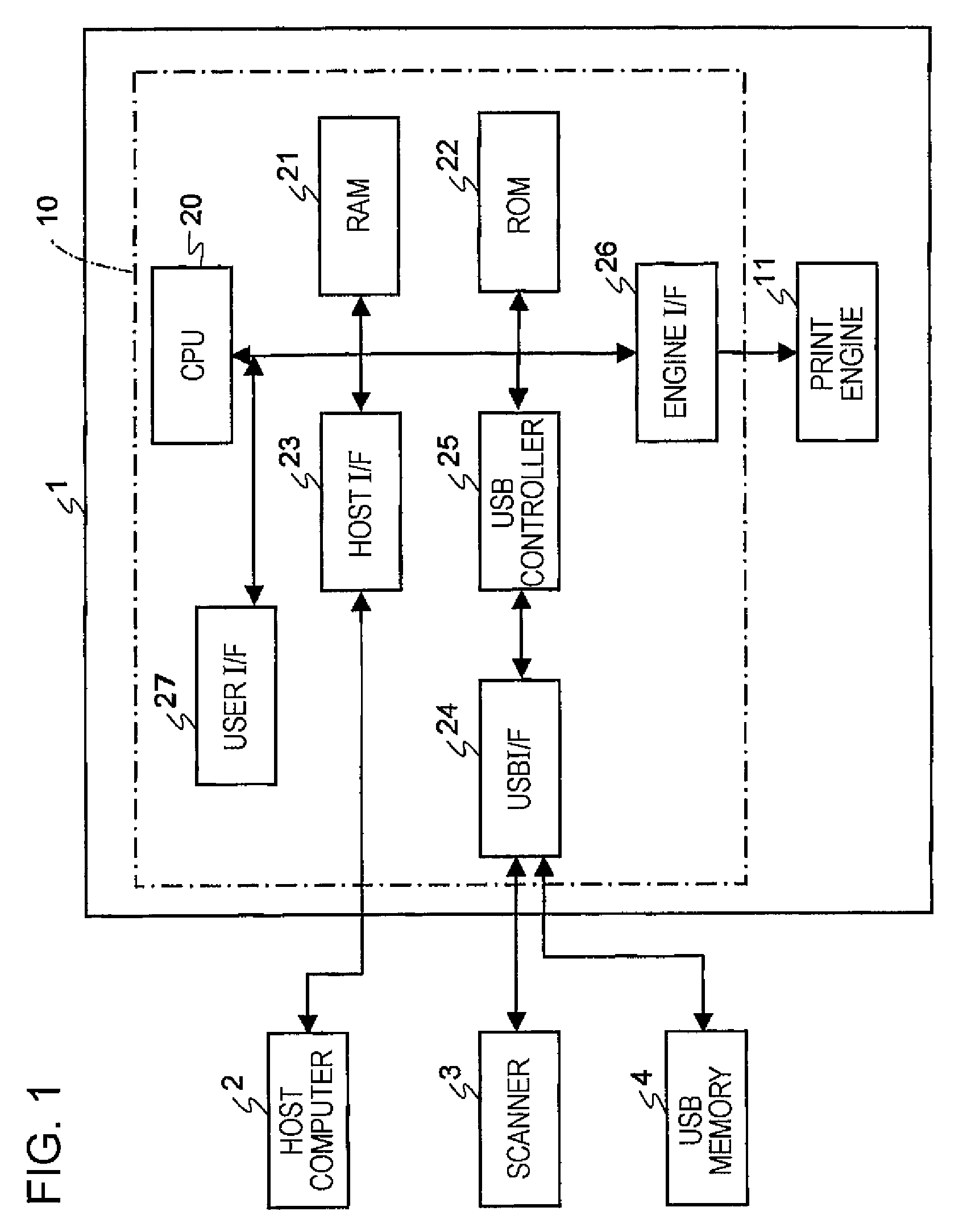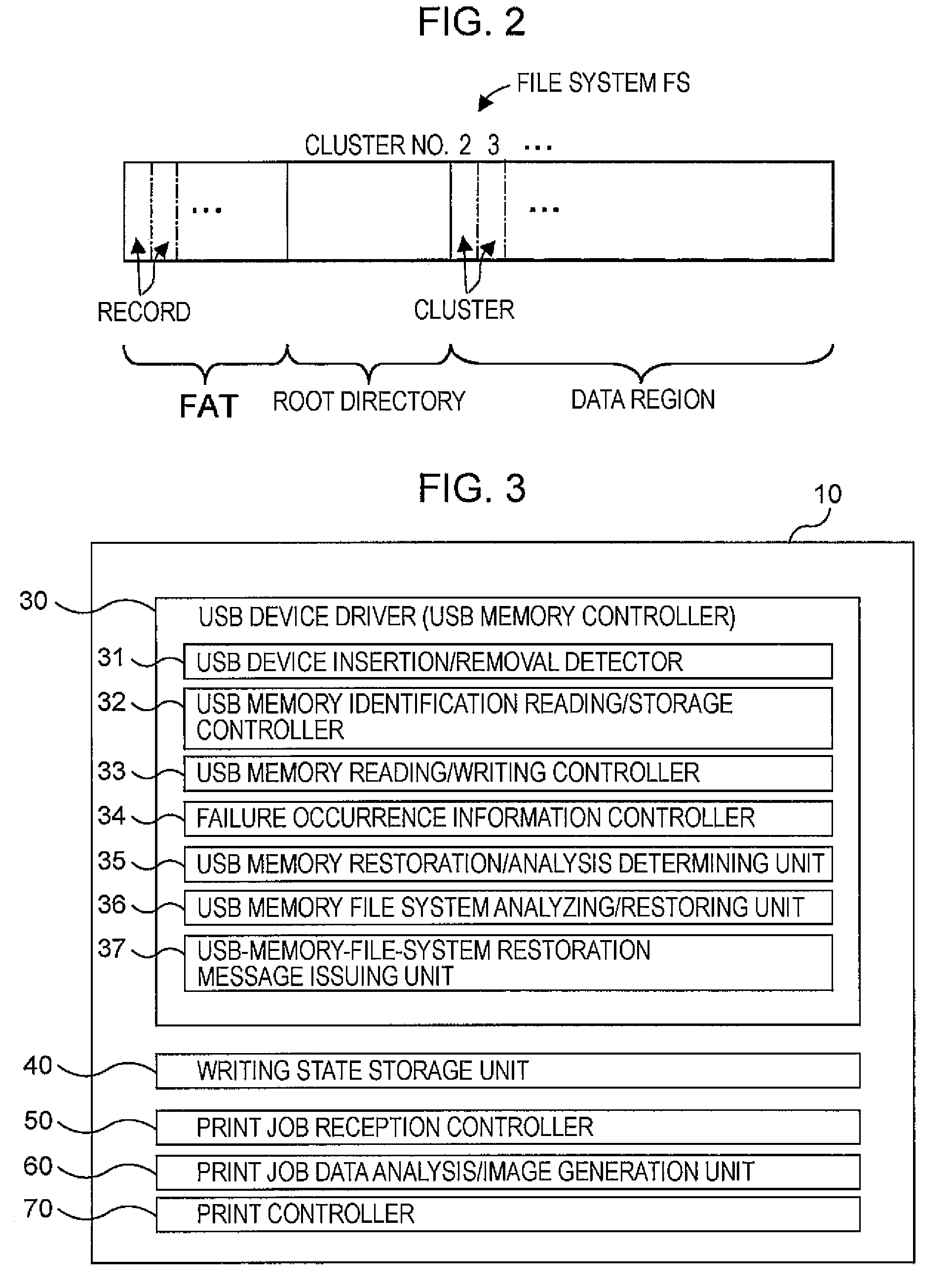Data processing apparatus and method for restoring a file system
a data processing apparatus and file system technology, applied in the field of data processing apparatuses and methods, control programs therefor, and recording media, can solve the problems of inability to ensure the logical consistency between the management table and the data stored in the data region, inability to accurately read the data stored in the file system, and inability to determine when the file system should be restored, etc., to achieve efficient and appropriately determined
- Summary
- Abstract
- Description
- Claims
- Application Information
AI Technical Summary
Benefits of technology
Problems solved by technology
Method used
Image
Examples
first embodiment
[0044]A first embodiment of the invention will be described with reference to the drawings.
[0045]FIG. 1 shows the hardware configuration of a printer according to the first embodiment. As shown in FIG. 1, a printer 1 includes a data processor 10 for performing various processes and a print engine 11 for receiving print data from the data processor 10 and printing an image. The printer 1 is connected to a host computer 2.
[0046]The data processor 10 includes a central processing unit (CPU) 20, a random access memory (RAM) 21, a read-only memory (ROM) 22, a host interface (I / F) 23 for interfacing with the host computer 2, a USB I / F 24, a USB controller 25, an engine I / F 26, and a user I / F 27. The elements of the data processor 10 are connected to one another so that data can be exchanged among the elements.
[0047]As shown in FIG. 1, a scanner 3 and a USB device, such as a USB memory 4 (recording medium), which is a recording medium with an internal rewritable non-volatile flash memory, ...
first modification
[0104]In a first modification, in the event of the removal of the USB memory 4 while data is being written, this state is indicated not using the above-described write status information, but using the identification information of the removed USB memory 4. Therefore, when the USB memory 4 is removed, the identification information of the USE memory 4 itself is recorded.
[0105]FIG. 7 is a flowchart showing an exemplary process of writing data to the USB memory 4. As in the case described with reference to FIG. 4, for example, when the host computer 2 sends a command to print a file in a print job and to save the file in the USE memory 4 or when the user I / F 27 sends a command to write an image data file captured using the scanner 3 into the USE memory 4, the USE device driver 30 starts a file writing process.
[0106]In step S40, the USE memory reading / writing controller 33 accesses the file system FS in the USB memory 4 and writes data in the file to be written.
[0107]In step S41, the U...
second modification
[0131]When the USB memory 4 is removed while data is being written, the name of a file being written may be recorded. For example, as shown in FIG. 10, the name of a file that is very likely to contain a failure due to the removal of the USB memory 4 during writing can be recorded as the writing state information I, together with a path for recording the file, in the writing state storage unit 40.
[0132]The recorded file name can be used to restrict files to be analyzed and restored. In the first embodiment and the first modification described above, when it is determined that it is necessary to perform analysis upon reconnection of the USB memory 4, the recorded file name can inform the user of the file name of a file that needs to be restored in the subsequent analysis and restoration processing. Therefore, only the file that is on the recorded path is to be processed. The processing time required for analysis and restoration can be reduced. Alternatively, the file system FS may be...
PUM
 Login to View More
Login to View More Abstract
Description
Claims
Application Information
 Login to View More
Login to View More - R&D
- Intellectual Property
- Life Sciences
- Materials
- Tech Scout
- Unparalleled Data Quality
- Higher Quality Content
- 60% Fewer Hallucinations
Browse by: Latest US Patents, China's latest patents, Technical Efficacy Thesaurus, Application Domain, Technology Topic, Popular Technical Reports.
© 2025 PatSnap. All rights reserved.Legal|Privacy policy|Modern Slavery Act Transparency Statement|Sitemap|About US| Contact US: help@patsnap.com



